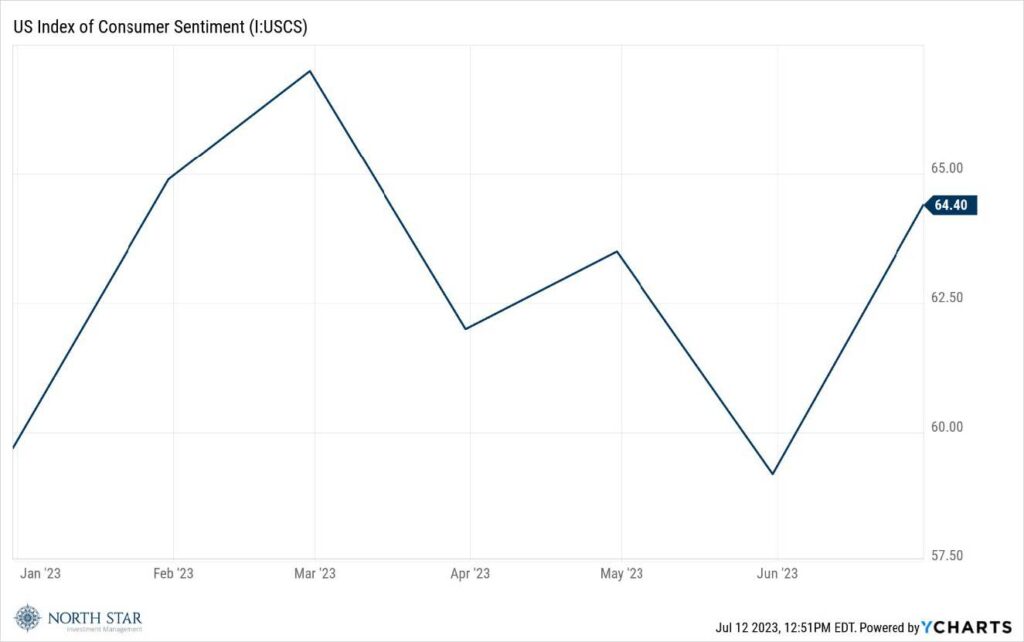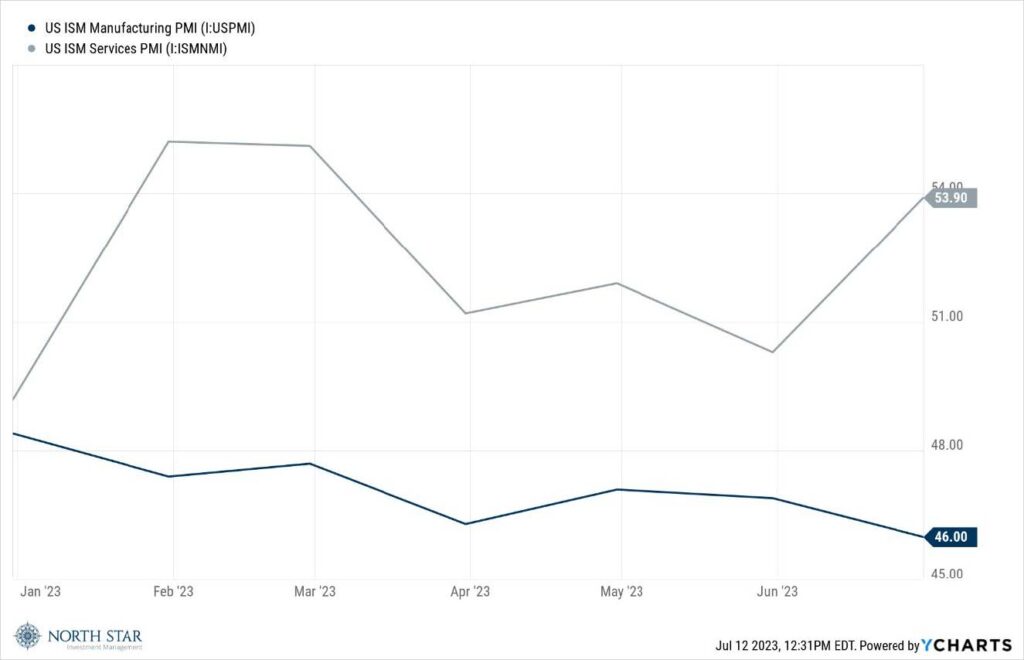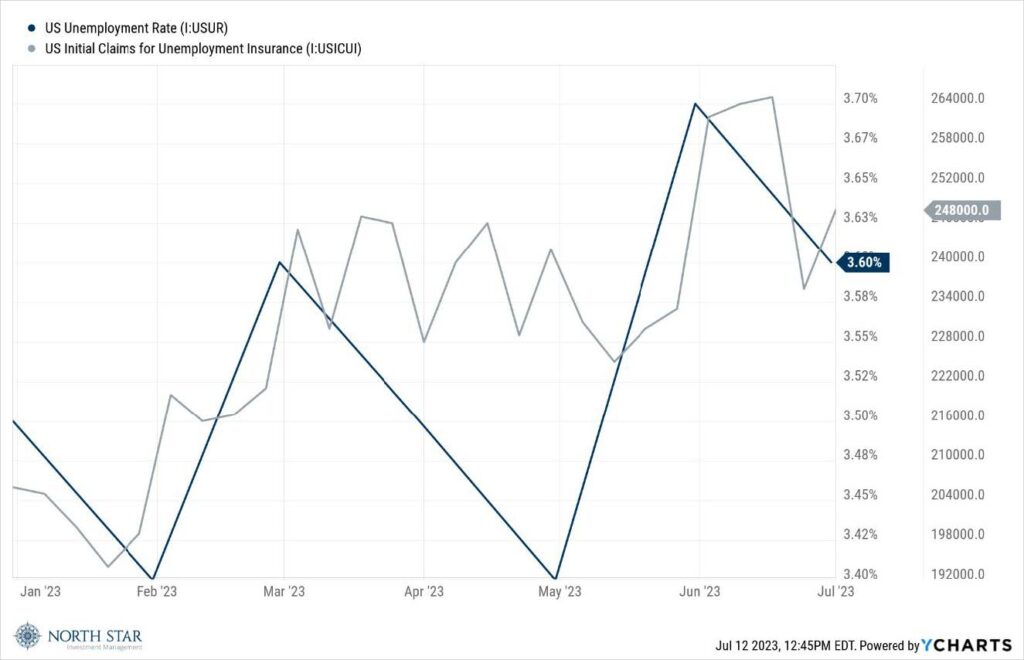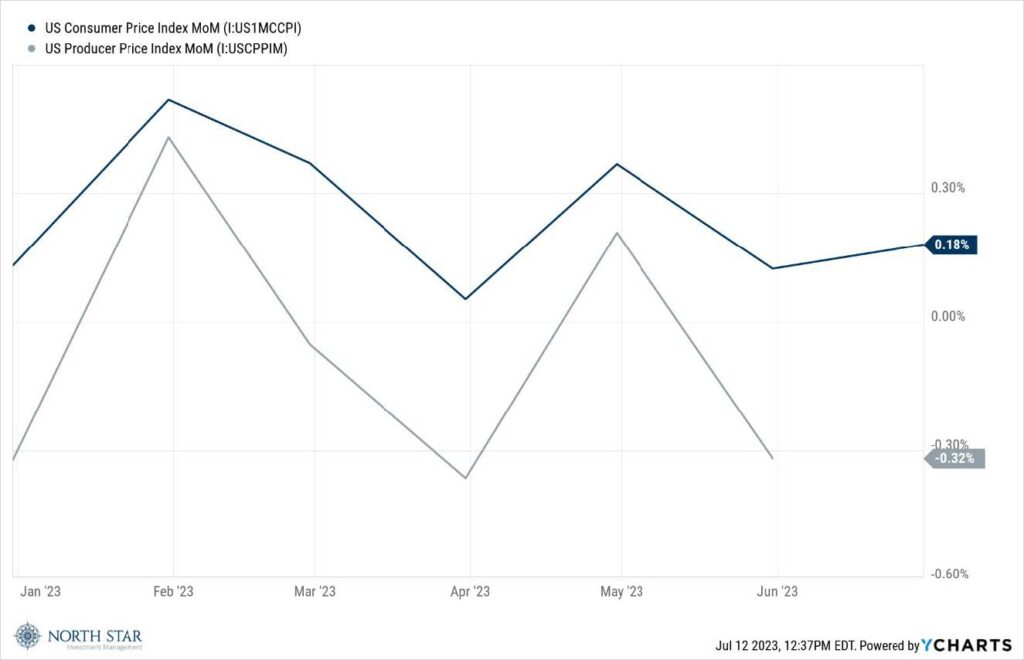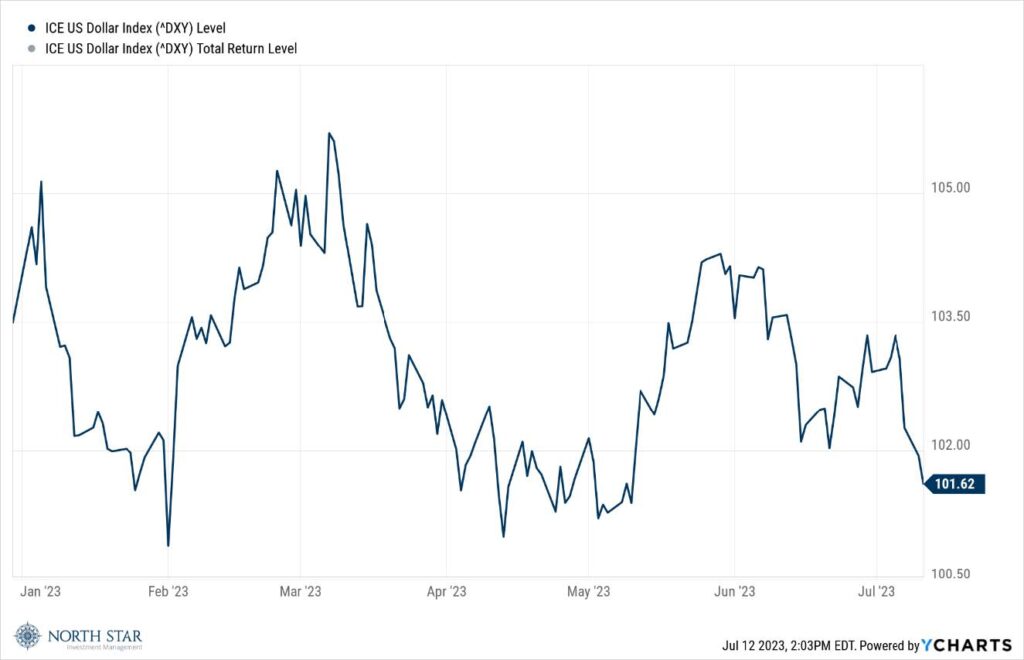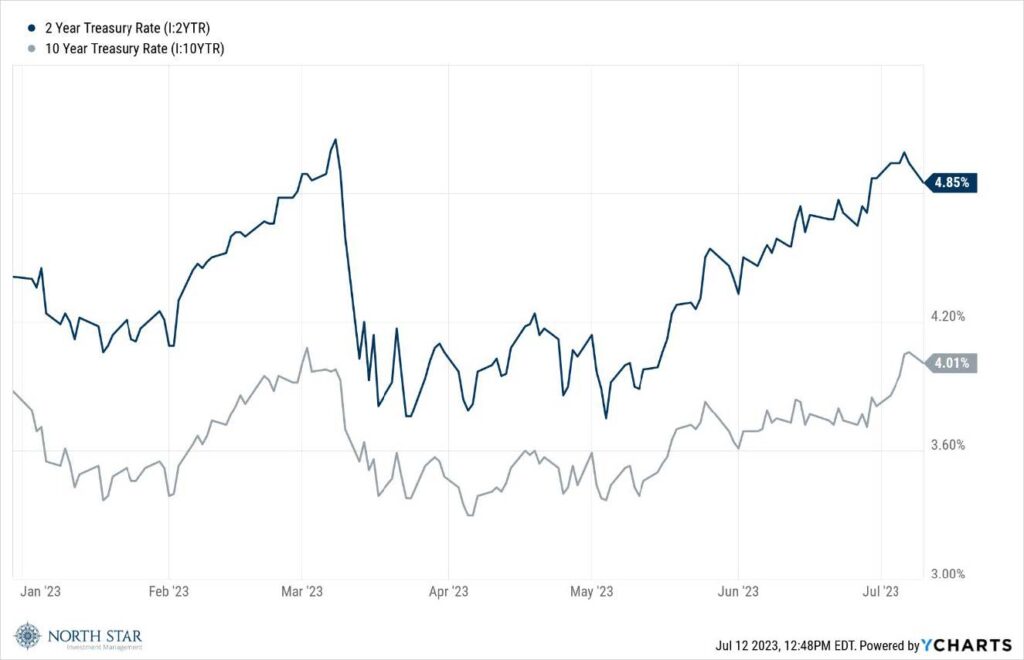Second Quarter 2023 Economic Review
For the three-month period ending June 30ᵗʰ, the S&P 500 Total Return Index increased 8.7% while
the Bloomberg U.S. Aggregate Intermediate Bond Index fell 0.7%. Year to date, the S&P 500 Total
Return Index is up 16.9% and the Bloomberg U.S. Aggregate Intermediate Bond Index is up 1.6%.
The economic data continues to show a resilient economy combined with easing inflationary
pressures. The recent positive performance of equity indices seems to reflect the “no recession”
camp while the widening 10-year yield minus 2-year yield indicator stubbornly, and even
increasingly, seems to reflect that bond market is anticipating a slowdown in the economy. Going
forward, investors will continue to be focused on corporate earnings and the pace and path of
Federal Reserve interest rate decisions.
Corporate profits in the 2ⁿᵈ quarter are forecasted to have declined 6.8%, which would mark the
third consecutive quarter of declines, and the largest decline since the 2ⁿᵈ quarter of 2020 when
the pandemic closed the economy. The good news is that profits are expected to rebound in the back
half of the year, and as believers in capitalism, one can feel confident that corporate profits
will continue their long history of excellent
growth.
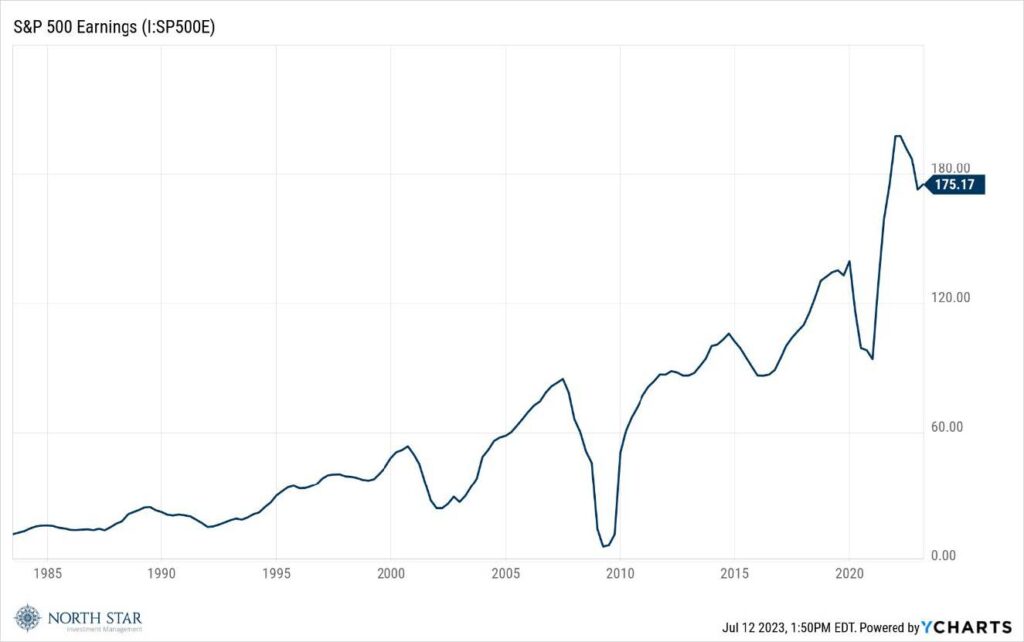
The following charts are indicators that North Star uses to measure the general health of the
economy:
Consumer confidence remained subdued.
Manufacturing remained weak while services showed greater strength.
The jobs market has cooled off, but still is exhibiting shortages of workers and some wage
pressure.
Inflation was the story of the first half of 2022, as the downward trend in both CPI and PPI has
been apparent for the last 12 months.
The housing market remains extremely robust with elevated demand despite higher prices and higher
mortgage rates.
The dollar has been stable, while interest rates, particularly short-term rates determined by the
Fed, have continued to climb.
On balance, we view the data as supporting the case for a “soft landing”, with the inversion of the
yield curve more a function of Fed policy than determined by market forces.
Previous periods of market volatility have demonstrated that trying to time the market is a
difficult and typically underperforming pursuit. For long term investors, simply staying invested
is the most prudent investment strategy. In addition, we encourage investors to manage risk by
staying in their asset allocation range and maintaining a diversified portfolio.
Please visit www.nsinvest.com for Kuby’s Commentary, Eric Kuby’s weekly market review
and outlook.

